Introducing Andrezza Valentin, a visionary contemporary artist and designer hailing from the vibrant streets of São Paulo, Brazil, now making waves in the bustling creative scene of New York City.
Andrezza’s journey is one of boundless creativity and unwavering passion. Fueled by a profound love for all things handmade and a relentless pursuit of artistic expression, she embarked on a quest to fuse her background in design and art with the meticulous craftsmanship of jewelry making. Thus, Paradise Feathers was born—a testament to her ingenuity and artistic prowess.
Having previously delved into the realm of large-scale sculptures and installations, Andrezza’s artistic evolution is a testament to her adaptability and resilience. While her earlier works embraced the transient nature of ephemeral materials, her foray into jewelry design offers a striking contrast, allowing her creations to endure the test of time while retaining their singular essence.
Influenced by the timeless principles of Bauhaus and the opulent allure of Art Deco, Andrezza’s designs embody a harmonious fusion of minimalist elegance and sophisticated allure. With a keen eye for geometric forms and a masterful blend of precious and non-precious materials, she crafts wearable sculptures that exude an aura of glamour and refinement.
Andrezza Valentin is not merely a designer; she is a storyteller, weaving narratives of beauty and intrigue with every meticulously crafted piece. Her creations beckon the wearer to embark on a journey of self-expression and empowerment, embodying the essence of modern luxury and artistic innovation.
In the ever-evolving landscape of contemporary design, Andrezza stands as a beacon of inspiration—an artist unafraid to push boundaries, challenge conventions, and carve her own path towards creative greatness.
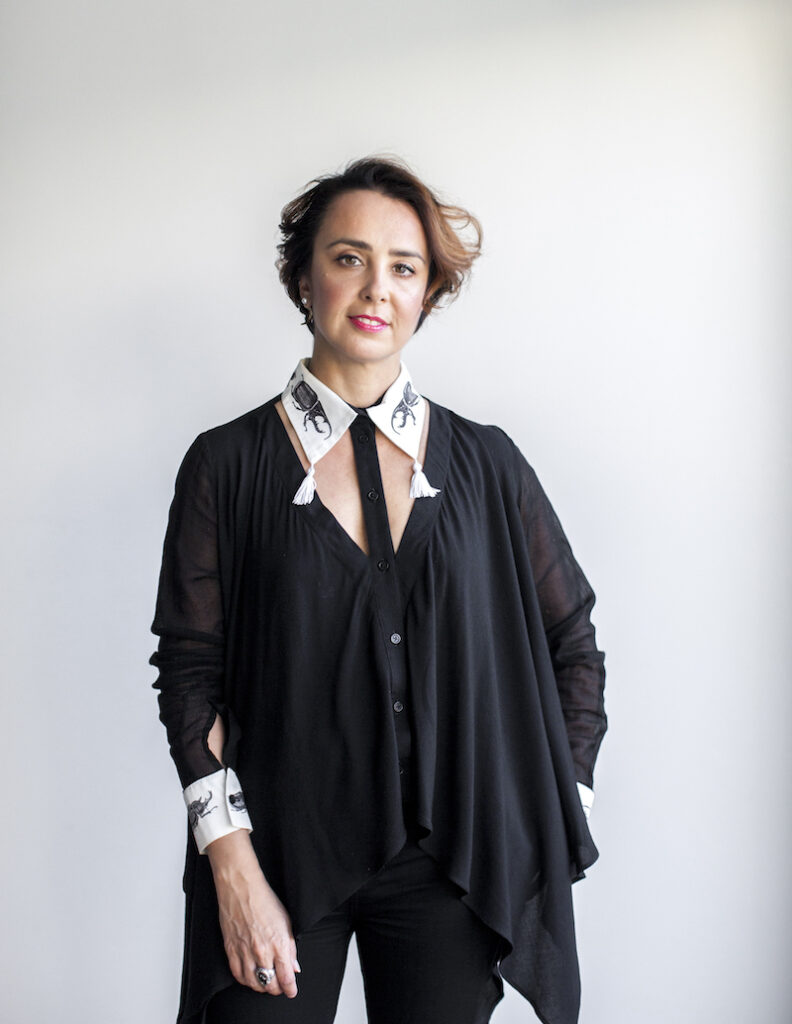
Can you share the story behind the creation of Paradise Feathers and how your journey as a contemporary artist led you to jewellery design?
After moving from Brazil to the US, I found myself searching for a new way to make art. The change of countries, culture, and the realities of living in NY with very limited space forced me to rethink my work as an artist. It made me think of sculpture and materials in a different way since my inspirations and environment were now very different. The approach to jewellery as sculpture or object of art was a seed planted by one of my friends and an amazing art curator, Cristina Candeloro, when we were still at the university. After one of her trips to London, she gave Stainless Steel a ring with the engraving – “Rings are small sculptures.” That was the first time I saw jewellery as an art object.
Your background involves large-scale sculptures and installations with ephemeral materials. How does this experience influence your approach to creating lasting and unique pieces in the realm of jewellery design?
Working with metal and everlasting materials serves as a counterpoint to my large-scale and ephemeral sculptures. Before, the choice of using ephemeral materials was intrinsic to my pursuit of materializing the experience of transience and longing for a moment that can’t be held forever. Jewellery, for me, is an evolution of that initial creative desire because it can be a memento, a reminder of a memory, an event, a feeling, or even a person.
Bauhaus and Art Deco are mentioned as significant influences in your work. How do these artistic movements inspire and shape your minimalist designs?
Before I became a fine artist, I studied graphic arts, which was my first introduction to design. My early influences as a designer were heavily influenced by Bauhaus’ holistic approach to creativity, which saw all expressions of design and art as equally important. Both Bauhaus and Art Deco aesthetics are heavily influenced by architecture, precision, and a relentless pursuit of simplification in terms of form, color, and materials. However, Art Deco brings luxury and glamour into the mix since it often combines bold colors, geometric lines with gold, diamonds, and high-end materials.
Can you elaborate on the concept of Paradise Feathers, and how does it reflect your artistic vision and personal ethos?
I created Paradise Feathers with the desire to create wearable art pieces that can be worn every day instead of being put away in a glass box to be admired but not touched. I wanted to create tactile objects that can be used as a channel for self-expression and as a statement of each person’s unique style. I believe everyone can be glamorous without a lot of effort. We just need to be very intentional about what we wear and don’t be afraid to not conform to trends.
Transitioning from large-scale artworks to small, wearable sculptures is a unique shift. What challenges did you face in adapting your creative process to a different scale, and how did you overcome them?
This transition happened over the course of years, so it wasn’t an abrupt change. However, having to create scale models and prototypes before actually building the final sculpture helped me reframe my thinking to work on a smaller scale for my jewellery pieces. The precision and patience that come with working on a small scale are still a constant learning process. I find jewellery less forgiving when it comes to mistakes. You have to be very mindful and precise whereas when working with ice or any other ephemeral materials, you don’t need the same rigor and precision because everything is changing every moment.
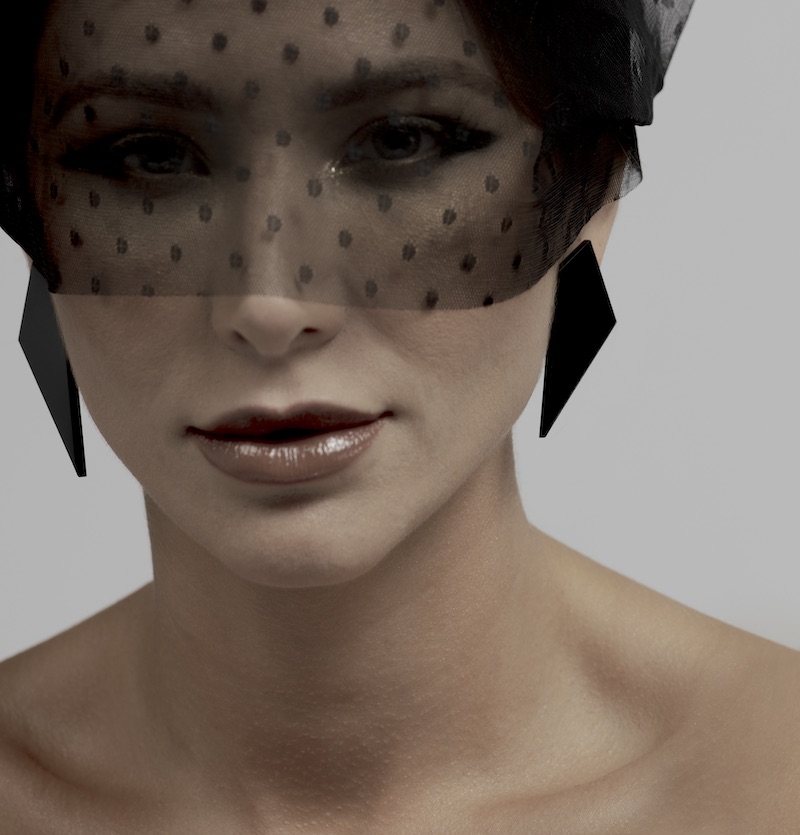
The combination of geometric shapes, clean lines, and a mix of precious and non-precious materials is a hallmark of your designs. How do you strike a balance between these elements to achieve the desired aesthetic?
The balance is very intuitive for me. The simplicity of the shape and the choice of materials are the most important decisions. If I decide to use a material that has textures like Rutilated Quartz or precious metals, I intentionally seek a counterpoint in the shape that brings a unique approach and structure to the piece.
How does your Brazilian background influence your artistic perspective, and in what ways does it manifest in the pieces you create for Paradise Feathers?
Brazil has a huge heritage in mining and stones. I’m just starting to scratch that surface. I always admired Brazilian Modernism, especially its expression in architecture and furniture design because of the unexpected use of organic materials and shapes, which make it very unique compared to Modernism in Europe or the US. I believe my interest in combining precious and non-precious materials is inspired by that.
Sustainability is a growing concern in the world of fashion and design. How do you approach sustainability in your creations, considering both the materials you use and the longevity of your pieces?
I cannot claim to be 100% sustainable, and honestly, nobody can. Greenwashing is a huge issue in the fashion industry, and because of that, I try to be as transparent as possible. I have very clear boundaries, especially in terms of materials. I only started using gold when I could be sure of its source, and the same goes for semi-precious stones. I’m still exploring the idea of using precious stones like diamonds because of the complexity to trace its origins. The size and shapes of my pieces sometimes force me to go for alternative materials like acrylic and soon glass. I’m also doing a lot of research on how to offset the impact of acrylic and ways to recycle it to minimize the environmental impact.
Your jewellery is described as “wearable sculptures of glamor and sophistication.” What emotions or experiences do you aim to evoke in the individuals who wear your creations?
I aim to evoke feelings of empowerment, confidence, and self-love through my creations. True glamour, to me, is the light that shines from within.
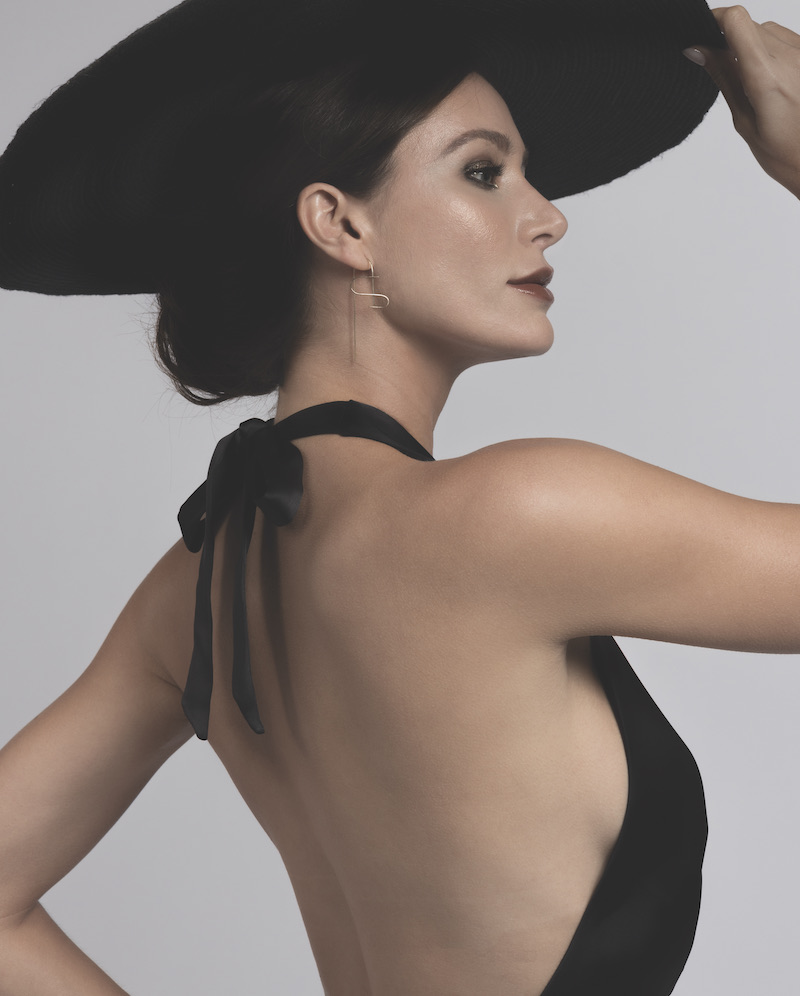
Can you share a memorable moment or story from your journey as a jewellery artist that has significantly impacted your approach to your craft?
It’s hard to pinpoint a moment, but being able to make my first ring from scratch, melting the metal, making the wire, shaping it, until its finished form was magical.
Collaboration often plays a vital role in the world of design. Have you collaborated with other artists or designers, and if so, how has it enriched your creative process?
I haven’t had the chance to collaborate with other designers or artists yet. I’ve done it in the past as a traditional artist and graphic designer. I know opportunities will come, and it is always fun to see how the work evolves and changes when you have another perspective brought into the fold.
In the fast-paced world of fashion, how do you ensure that your designs remain timeless and continue to resonate with your audience over the years?
I don’t try to pursue trends. I believe the endurance of my designs will come from the craft and my ability to maintain a continuous visual thread throughout my work, even when my style will naturally evolve over time.
Do you have a favorite piece from your collection, and if so, what makes it special to you?
I love every piece, but the Slab Bracelet is my favorite. I love the boldness of the shape, the combination of gold with acrylic. I believe that piece truly expresses my vision as an artist.
As a designer based in New York, how does the vibrant and diverse cultural scene of the city inspire or influence your work?
The energy, the cultural diversity, and especially the uniqueness of how people express themselves through fashion in NY are extremely inspiring. You see trends being created, fad, weird and clever combinations. Everything is possible and valid if you can pull it off. I love that freedom, and that carries through my work.
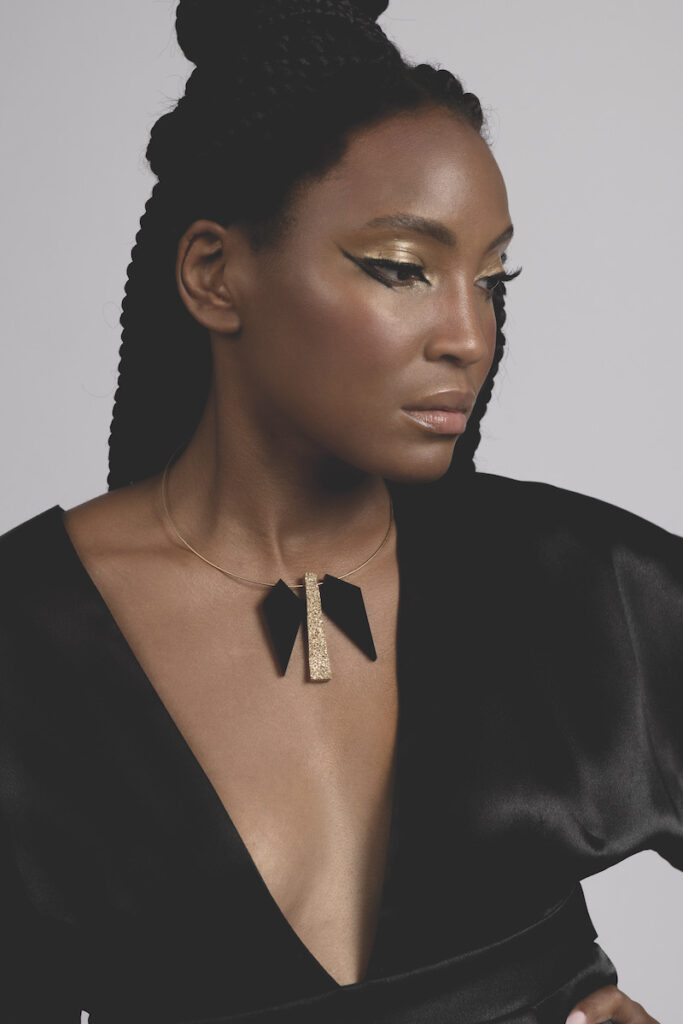
How do you approach the balance between functionality and artistic expression when creating pieces that are not only visually striking but also meant to be worn?
I wear all my pieces for a long period of time to make sure it is comfortable and truly wearable. I’m not interested in creating concept pieces that you can only look at, but they don’t really work in real life. I consider a piece done only when I can achieve the desired design and look while ensuring functionality.
Are there specific materials or techniques that you find particularly fascinating or challenging to work with in your jewellery designs?
I love metalforming. A lot of my pieces are handmade and formed by hand. Metalforming is a magical process for me because you transform a hard material into many different shapes through fire, pressure, tension.
How do you navigate the intersection of art and commerce in the world of jewellery design, ensuring your creations maintain artistic integrity while being accessible to a broader audience?
I took the approach of creating a collection that has different ranges of prices. The art jewelry category gives you more freedom to be more accessible because you were not expected to only use precious metals and stones. The playfulness of combining materials in my work allows me to keep the creative integrity and still be able to offer more accessible pieces.
With the ever-evolving landscape of fashion and design, how do you stay creatively inspired and continue to push the boundaries of your own work?
I always welcome the new, and I believe the ever-evolving landscape is an invitation to innovate and experiment. My inspiration comes from many different places, AI and virtual fashion to cinema, social media, and of course from familiar places like art and design.
Can you share insights into your creative process, from the initial concept to the final product? Are there rituals or routines that aid your creativity?
This is a quote from Tadao Ando that describes my process very well: “My hand is the extension of the thinking process – the creative process.” Sometimes I start a piece by sketching some initial ideas on my iPad, but quickly I move into prototyping it in brass and acrylic. I finally bought a laser cutter, which transformed my process.
I don’t need to worry about not getting this right the first time because I can easily iterate and improve the design, without having to spend a fortune or wait for days to receive a new piece. In my studio, I have a space where I concept, surrounded by books and references, and right next to it is my jewelry bench, plating, laser cutting. I can’t imagine myself working without being hands-on. I need to touch it and feel it to give it meaning and understanding.
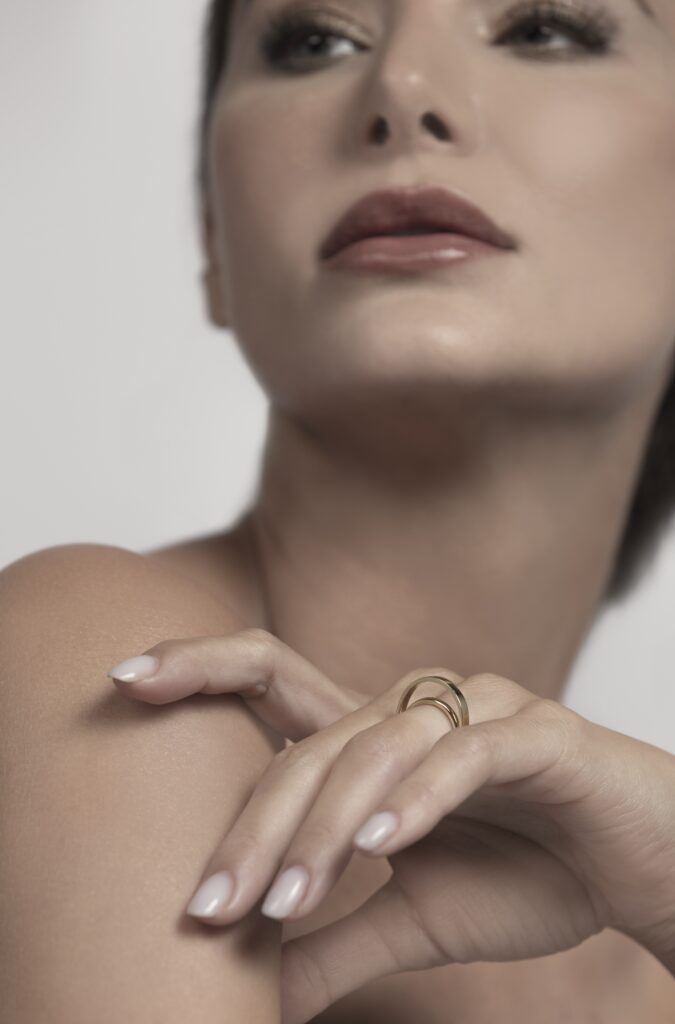
What advice would you give to aspiring jewellery designers or artists who are looking to carve their niche in the competitive and dynamic world of contemporary design?
Be patient, be humble, trust your instincts but also know how to listen. I learn so much from observing and listening to people tell their journey as a jeweler and artist. We don’t need to do everything ourselves, and we don’t need to be perfect. I’m much more gentle and compassionate with myself as a jewelry designer than when I was working as a traditional artist. Probably age and experience taught me that perfection is not real and the most important is to love and enjoy what you do. The rest will fall into place over time.




Comments are closed.